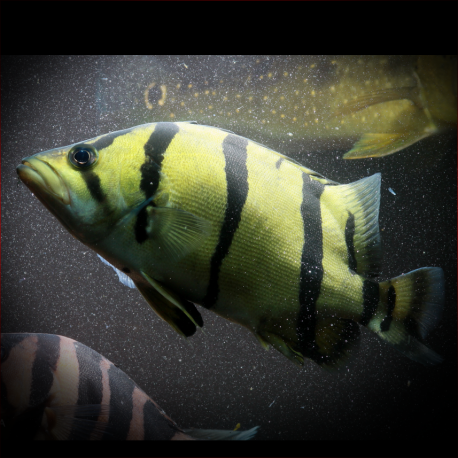More info
Datasheet
| Minimum Tank Size | 650 litres / 171.71 US gallons |
| Maximum Size | 30.0cm / 11.81inches |
| Temperature | 20°C / 68.00°F - 28°C / 82.40°F |
| Hardness | 2.02dgH / 36ppm - 15.02dgH / 268ppm |
| pH | 5.5-7.5 |
General Description
Datnioides Undecimradiatus, commonly known as the Mekong Tiger Perch, is a species of fish classified under Perciformes. It is a largely piscivorous predator with highly protrusible mouthparts, and adults can reach up to 30.0cm in size. The species is distinguished by its color pattern, comprising of four relatively thin dark bars and specific fin ray counts.
Aquarium Setup
For optimal care, juveniles and subadults of D. Undecimradiatus should be housed in a well-decorated, planted aquarium with driftwood roots and branches, while larger individuals are less demanding but appreciate some surface cover like floating vegetation. A tank size of at least 650 litres should be provided, with the need for large external filters due to the fish producing a significant amount of waste. It is recommended to avoid the addition of marine salt at any stage of their life.
Behaviour
This species can coexist with similarly-sized fishes if given ample space but might be intimidated by territorial or competitive species. While juveniles may form groups, adults are not social and react aggressively to conspecifics and similar-shaped fishes. They are best kept either alone or in groups of five or more individuals.
Feeding and Diet
Datnioides Undecimradiatus are efficient predators accepting a variety of foods in captivity, including chironomid larvae, prawns, fish flesh, mussels, and more. Feeding adults 2-3 times per week is sufficient, and it is crucial to avoid mammalian or avian meat in their diet to prevent health issues.
Reproduction & Dimorphism
Reproduction of this species remains unrecorded, and sexual dimorphism is currently unknown.
Habitat and Distribution
The Mekong Tiger Perch is found exclusively in large, deep freshwater rivers in Thailand, Laos, Cambodia, and Vietnam. It is not known to inhabit brackish environments and faces conservation concerns due to habitat alteration and overfishing, leading to its vulnerable status according to the IUCN.

